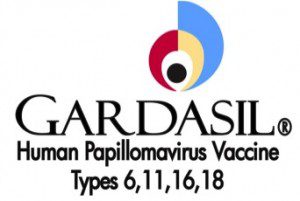

by Bethany DiPrete
Human papillomavirus (HPV) infection is the most common sexually transmitted disease in the United States, and as of yet, there is no cure. However, there is a vaccine to prevent infection by certain strains. Recent research may encourage not just the young women of the world, but also the men, to rush to their doctors for this vaccine. As the advertisements for Gardasil have taught many of us, certain strains of HPV are responsible for the majority of cervical cancer cases. Now research is uncovering HPV as a major factor in several oral cancers as well. While men may have thought there was no need to get vaccinated against HPV before, this new information may change things.
Human papillomavirus infects epithelial cells of skin and mucous membranes. Through skin abrasions caused by injury or sexual contact, the virus gains access to the basal layer of the epithelial tissue, which is the lowest layer of the skin. HPV is a DNA virus that replicates in the epithelium at the primary site of infection. Noncancerous strains, which cause papillomas (warts) or even no apparent symptoms, replicate in the basal epithelial cells. The viral genome does not integrate into the host genome of the cell it infects, but instead replicates autonomously in a dividing cell. The productivity of viral replication depends on the stage of cell differentiation. As the infected cell moves to the upper level of the epithelium and begins to differentiate, viral replication becomes more productive. Replication producing high concentrations of viral genomes and the assembly of new virus particles (virions) is restricted to the outer epithelial cells, which are fully differentiated and no longer divide.
In cancers caused by viral infection, the virus must transform the infected cell, changing its growth properties and allowing for progression to cancer. In transformed cells, the viral genome has integrated into the host genome. When the viral DNA is integrated into the cellular genome, the viral mRNA that is then transcribed can contain cellular DNA sequences and is subsequently more stable than sequences transcribed from a nonintegrated viral genome. Because the mRNA transcripts are more stable, viral proteins, specifically proteins E6 and E7, are present in higher concentrations than in cells where the viral genome is not integrated. These viral proteins E6 and E7 interfere with the cell cycle by restricting the activity of the cellular tumor suppressor proteins p53 and Rb. Specifically, E6 blocks apoptosis (programmed cell death) by inducing degradation of p53. In an uninfected cell, proteins Rb and p53 sense DNA damage and prevent the cell cycle from progressing further. Protein E7 binds Rb proteins, allowing the cell replication cycle to progress so the virus can replicate. Once a cell has been transformed, the cell replication cycle goes unchecked and this can allow for the accumulation of mutations in the cell’s DNA. This buildup of mutations and frequent cellular replication can lead to oncogenesis, the development of cancer. The specific strains that are associated with these changes in epithelial tissue that can lead to cancer are strains 16 and 18. These are the strains from which Gardasil protects an individual, along with strains 6 and 11, which cause genital warts.
Researchers have studied oral cancers among men who are nonsmokers and nondrinkers, and discovered the presence of HPV in the biopsied tissues. In fact, some researchers are now claiming that the prevalence of HPV induced oral cancers is greater than cancers caused by both smoking and drinking combined. HPV is spread by direct skin-to-skin contact and sexual contact, and its replication is localized to the site of infection. Therefore, individuals who do not engage in vaginal intercourse, but do engage in other forms of sexual contact, such as oral sex, are still at risk for HPV infection. Virus is shed from the epithelial cells of the infected individual, even when the individual is asymptomatic. If an individual is orally infected with one of the high-risk strains (either 16 or 18), the virus will replicate locally in the infected tissue, and as described above, can cause cell transformation, leading to oncogenesis and tumor progression. Because of these risks, the importance of this vaccine for both men and women is becoming blatantly apparent.
Hocking JS, Stein A, Conway EL, Regan D, Grulich A, Law M, & Brotherton JM (2011). Head and neck cancer in Australia between 1982 and 2005 show increasing incidence of potentially HPV-associated oropharyngeal cancers. British journal of cancer, 104 (5), 886-91 PMID: 21285981

Excellent explanation! If only the media would give equal time discussing a mans role in this disease instead of allowing the public to think this is only a disease of women. Not to mention viral transmission to infants during child-birth. Mark Reedy, MD